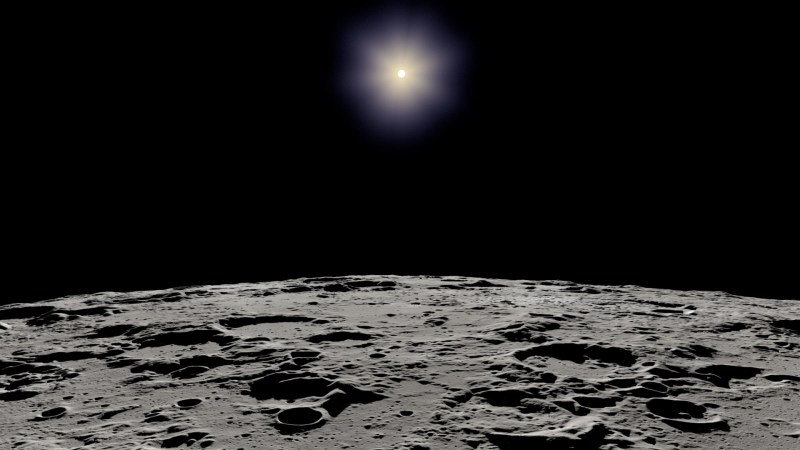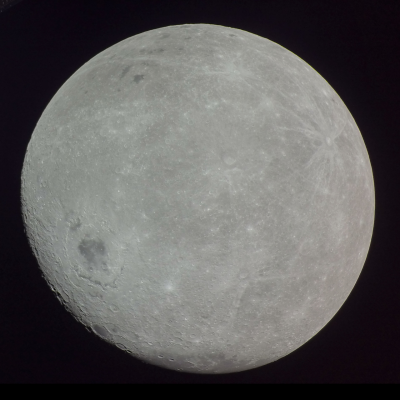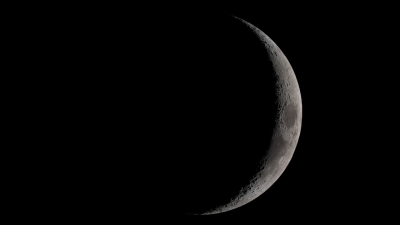

How Does Time Work On The Moon?
source link: https://hackaday.com/2024/03/26/how-does-time-work-on-the-moon/
Go to the source link to view the article. You can view the picture content, updated content and better typesetting reading experience. If the link is broken, please click the button below to view the snapshot at that time.
How Does Time Work On The Moon?
We’re looking to go back to the Moon. Not just with robots this time, but with astronauts, too! They’ll be doing all kinds of interesting things when they get there. Maybe they’ll even work towards establishing a more permanent presence for humanity on the lunar surface, in which case they’ll have to get up in the morning, eat breakfast, and get to work.
This raises the question—how does time work on the Moon? As simple as they can be down here, Earthly days and years have little meaning up there, after all. So what’s going on up there?
Tick Tock
On Earth, we have a great many time zones. At current count, they number around 40 or so. Officially, they’re pegged by their offset from Greenwich Mean Time. Some jurisdictions use offsets on a half-hour or quarter-hour, though the majority stick to whole hours for simplicity.
Why do we have all these time zones? It’s because humans like to peg their days to local solar conditions. We want 12 o’clock midnight to be roughly the middle of the night, and we want the sun roughly overhead at noon. Thus, we select time zones that enable this so our days make sense in line with our clocks. The numbers we assign to any given hour are ultimately arbitrary; the universe doesn’t care if we think it’s 9 o’clock or 37 o’clock. We’ve just got it set up how we like it, in a way that works for our societies.
On the Moon, all that becomes largely meaningless. It’s not subject to the same day/night cycle as the Earth, because it’s a wholly separate celestial body that’s up there doing its own thing. In light of that, the simplest answer is to simply use a convenient Earth time zone for timekeeping on Moon missions.

A digital visualization of the Sun as seen from the Apollo 16 landing site. With no atmosphere to scatter light, the sky on the Moon is always effectively dark. You’re just looking at outer space, even when the sun is beaming down like in this image. Credit: NASA’s Scientific Visualization Studio/Ernie Wright
That’s all well and good for short operations, or those involving robots, to a degree. For example, the Apollo missions didn’t care much about “Moon time.” With missions lasting a day at most on the surface, they weren’t on the Moon long enough for day/night cycles or their circadian rhythms to be a major concern.
If humanity is to establish a permanent presence on the Moon, though, things get more complicated. Our bodies tend to like operating on a 24 hour schedule. Our sleep can get messed up if we don’t observe typical day/night cycles, and that can lead to fatigue, health, and performance issues. Thus, it could be of great importance for a Moon colony to schedule its operations around local conditions.
There’s also the prospect of establishing a satellite navigation system for the Moon, similar to GPS and Galileo on Earth. The ESA has proposed the Moonlight initiative, which aims to provide navigational coverage for astronauts on the Moon with lunar-orbiting satellites. Satellite navigation is strongly dependent on accurate time keeping, so the question will be what timebase will the satellites run on?

The far side of the Moon is not actually dark at all. It’s just the side that faces away from us because the Moon is tidally locked with Earth. We had to develop spacecraft to get a look at it. Credit: NASA, public domain.
The Moon’s rotation isn’t much help here for generating a day/night cycle: It only rotates once for every 29.5 Earth days. Moon days are weeks long, followed by nights on the same timescale. Don’t be confused by the concept of the “dark side of the Moon,” either. That’s more about how part of the Moon isn’t visible from Earth. It’s more correctly termed the “Far side of the Moon,” because it gets just as much sunlight as the near side.
Given the lighting conditions on the Moon, there’s little hope for creating Earth-like solar time zones. Instead, space agencies would likely declare that astronauts should stick to one Earth time zone, and ignore local solar conditions. Given that humans couldn’t reasonably stay up for the light part of a full Moon day anyway, this could be a fine solution. Any given group of astronauts could choose the time zone most convenient for working with their support teams back home on Earth. For example, Indian crews may wish to stick to India Standard Time, while NASA’s astronauts would probably prefer to stay on Central Time with Mission Control in Houston. In these cases, crews would likely use strict schedules and perhaps even light assistance to maintain Circadian rhythms. This is already typical protocol on stations like the ISS.

It does get dark on the Moon, which is why we see “phases” of the Moon from Earth. In this visualization, you can see the lit part of the Moon is largely facing away from the observer. Credit: NASA, public domain
There could still be some value in establishing a system of Moon time, though. Astronauts would still need to track the local day-night cycle in different regions, as this would have all kinds of impacts on local operations. It could be that the Moon is divided up into a series of 12 or 24 regions, each of which is given a day that’s 24 “Moon hours” long. When planning work in a given area, astronauts could check the local Moon time to determine whether their work will occur at day or night.
It’s easy to imagine overlaying local Moon time and a home Earth time zone on a calendar or planning app of some kind. Thus, if you know you’re heading to a given region at Moon midday, local Moon time, you know you’ve got at least 8.125 Earth days of sunlight before you get to the local dark time. Converting between this and the astronaut’s chosen 24-hour home time zone would become a perennial bugbear, but a necessary part of living and working on the Moon.
For most of us reading this, we needn’t worry too much about Moon time. Launch technologies are still primitive enough that few if any of us will ever trod the lunar soil. For our children’s children, or their children, though, it could be a big deal. They’ll be planning moon raves in disused ice mines that kick off at the dead of midnight, Far Side Lunar Time (FSLT). They’re going to have a ball.
Recommend
About Joyk
Aggregate valuable and interesting links.
Joyk means Joy of geeK